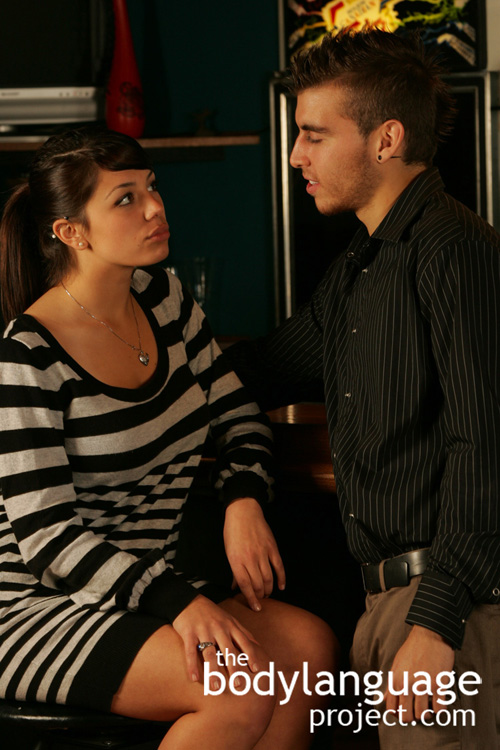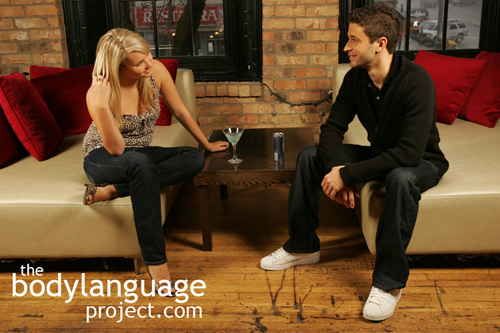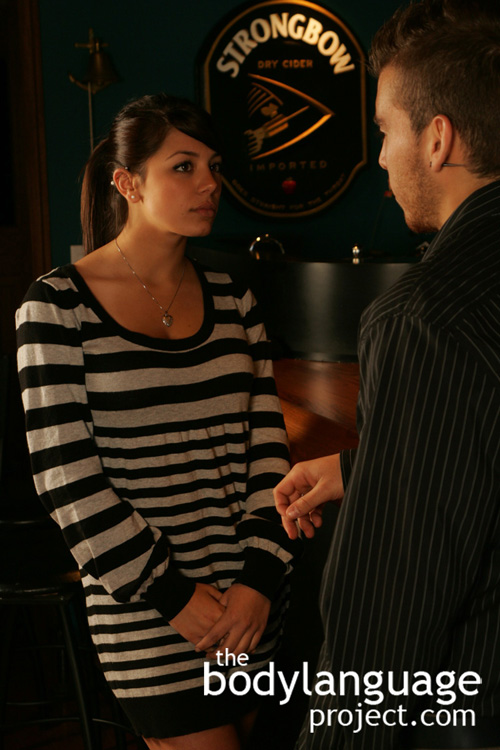We show attentiveness and also readiness, meaning a preparedness to take action by leaning toward the speaker, or things we want to get closer to, and away from speakers, or things we want to avoid. “Things” in the sentence previous can mean anything from proposals, ideas, opinions, decisions or anything else for that matter. This “ready posture” is akin to the sprinters ready position at the starting blocks and is called an “intention movement” because it tells us what someone wishes to do. The hands are placed on the legs or knees and the body leans forward ready to spring up and close a deal, or any other action that is being presented. It can also be done by placing the hands on the chair, arm rest or hands on the knees. While standing, the ready position is taken up by placing the hands on the hips. The eyes can also play a role in ready language as they make frequent and repetitive ganders to where a person is thinking, or where they would like to be.
In a business meeting or on a sales call, the ready position indicates that it’s time to stop talking and time to start closing, and that any agreement related to the conversation previous is likely to be accepted. Leaning forward not only means readiness, it sometimes means general interest. For example, a conversation taking place between friends containing some juicy gossiping or with an enthralling storyline, will have each party up “at the edge of their seats” and engaged in the conversation seemingly hanging onto every word. Other times, leaning language means that someone is late and needs to leave, or is bored and ready to go. The opposite position, meaning backwards leaning shows the reverse. It shows a detachment from the topic or from the speaker but can also indicate a high degree of comfort or relaxation where someone wishes not to leave. To uncover the true meaning behind leaning it will be a matter of tracking down additional cues to produce a cluster, and then matching this cluster with the context. The torso, however, is a great place to look to uncover where someone wants to go; it usually points directly to it.
A final ready posture that tells us someone wants to leave happens by propping the body up and coiling the legs underneath in a seated position. Uncrossing the legs and getting them underneath the weight of the body, shows body language readers that someone is ready to pick themselves up. This type of body language is a “leading gesture” because it is a predictor of what is about to happen. The body can also be tensed up or fidget so as to ready itself even more, and be moving away from what would normally be perceived to be the centre of attention. When people want to leave, their body begins to lean toward the exit, but even if their torso’s don’t, their feet will betray them by being extended forward. Additional ready gestures include straightening clothing, arranging or organizing papers, grabbing bags and so forth. These last cues, like the others, indicate an effort to get things going.










